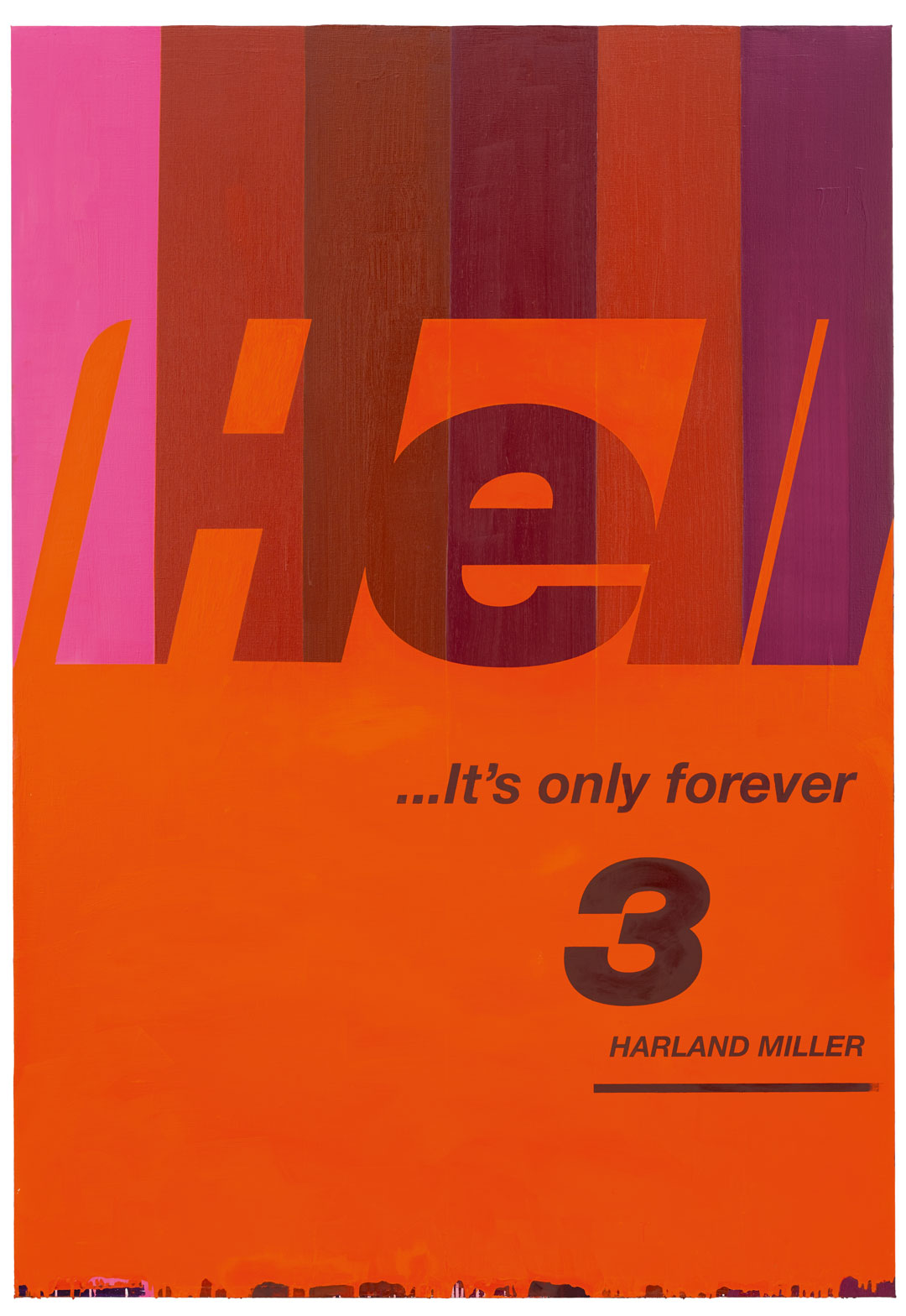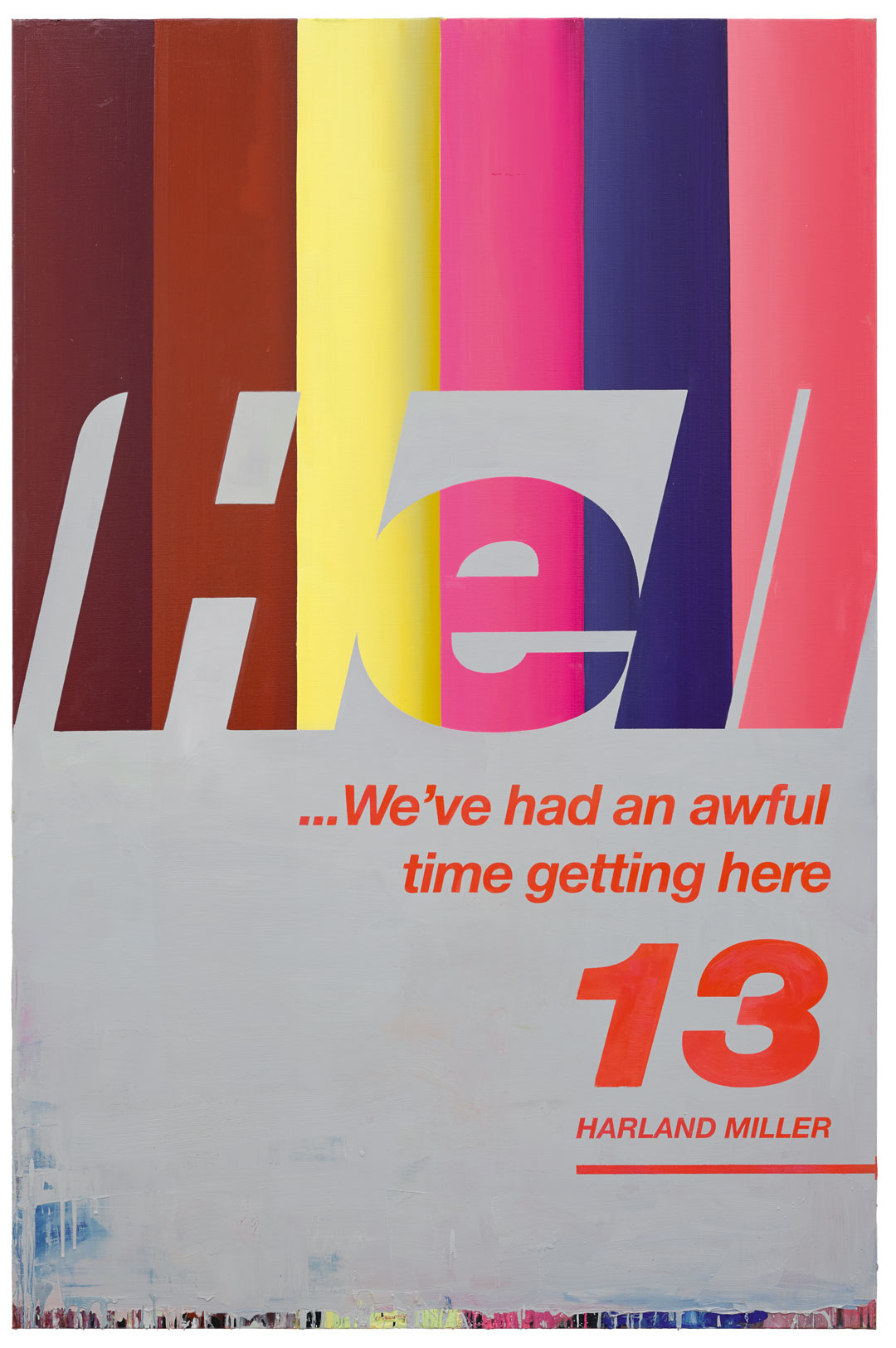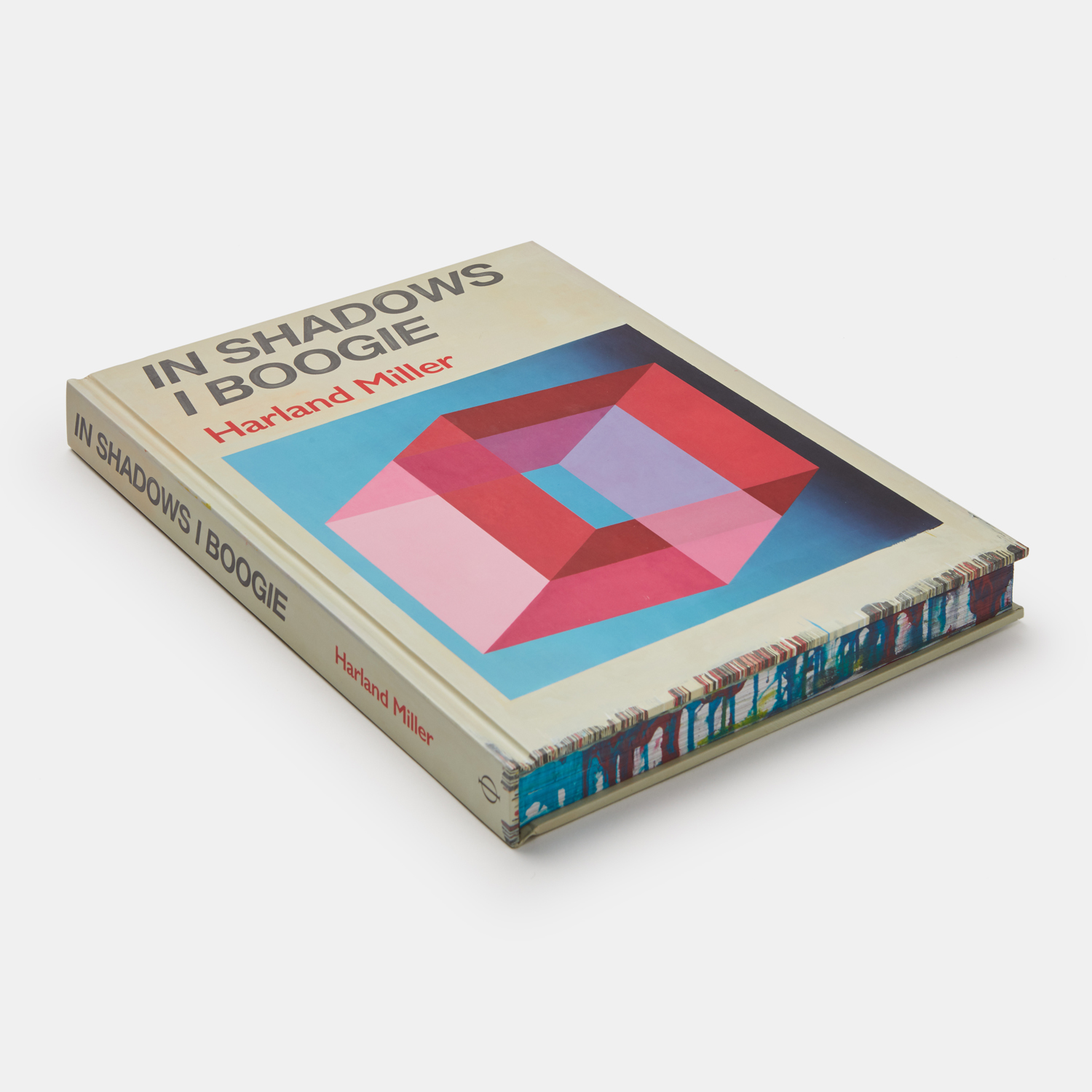
Harland Miller’s visions of hell
The artist’s experience taking coach journeys back in the 1980s inspired this colourful series on damnation
The British artist Harland Miller’s paintings may sell for six figures, but his art hasn’t always been quite so lucrative. As he explains in our new book, Harland Miller: In Shadows I Boogie, Miller used to travel via the cheapest form of long-haul travel.
“I spent a lot – almost a disproportionate amount – of time on coaches in the early 1980s, travelling around the world,” he explains in the book.
That time spent on coaches - or intercity buses, as American readers might better understand this mode of transport – wasn’t entirely wasted. Miller became interested in the vehicles’ changing liveries.
“I began noting and photographing the way in which the sides of the vehicles were being transformed by these new, bolder graphics to suggest a faster service,” he says, “or, for me, to address this sense of near inertia I’d always experienced on board.”
These go-go graphics and slow-slow journeys chimed in with another aspect of popular culture Miller had been turning over in his mind: hell. “The italicized letters had this ‘go faster’ look that related to the idea of hell in popular culture,” he says. “Like, y’know, Straight to Hell by The Clash or Highway to Hell by AC/DC… there are many examples, but always with this sense of speed, and of it being a place you’d arrive at much quicker than you’d thought – perhaps sometimes even before you’d set off.”

The pictures’ hot palette and withering lines might contain a whiff of fire and brimstone, but the artist’s intention isn’t to physically sum up damnation. “There isn’t a visual sense of trauma in these paintings,” he says. Linguistically ‘hell’ is simply an intensifier. It doesn’t immediately evoke Beelzebub and fire and all that stuff. I wanted to do the opposite – to create a series, incorporating contrasting ideas and approaches, with gravitas, with levity and so on.”

In fact, with their prominent numbers, Miller’s Hell series might help postpone a trip to Hades. “In Don DeLillo’s 1997 novel Underworld, he talks about collecting,” says Miller in our new book. “On one level it’s about baseball memorabilia, on another about collecting as away of transcending death. I like the way that this relates to these ‘Hell Paintings’, which also inherently refer to collectability. The numbers obviously do, although, in fact, they don’t actually catalogue the work at all – some numbers are repeated, while others are missed out completely – like the 13th floor of a hotel… They don’t just go from one to a hundred – which is good, I guess, as I don't know if I’ve got that much to say about hell.”

To read more about what this insightful contemporary artist does have to say about his life and work order a copy of Harland Miller: In Shadows I Boogie, here.